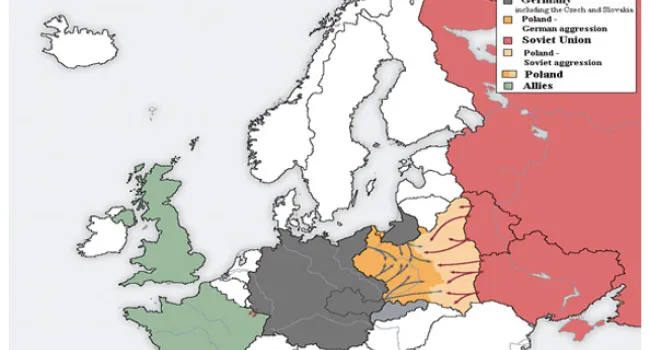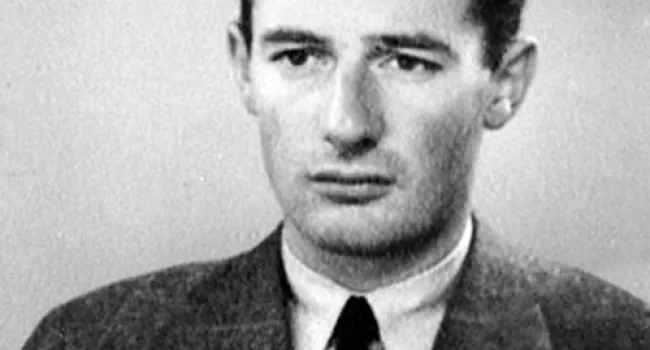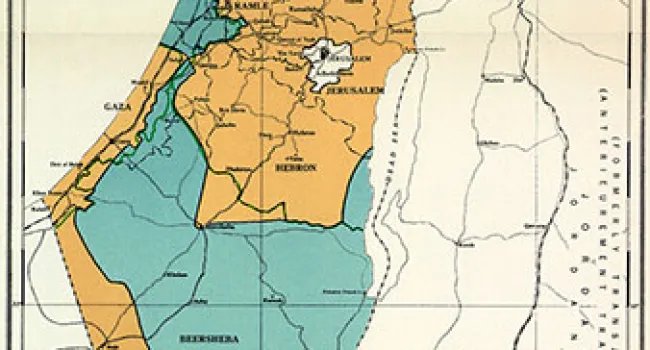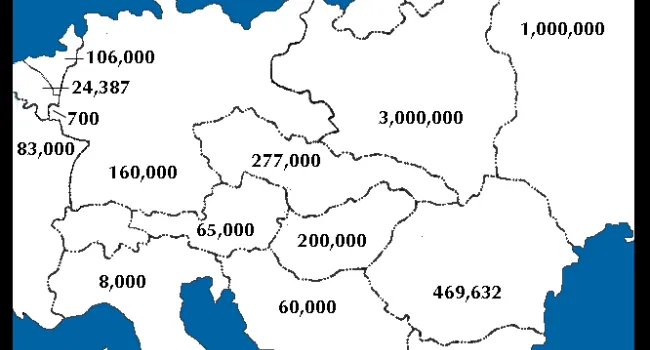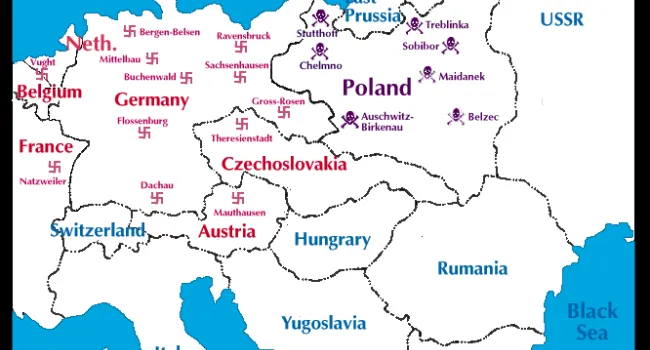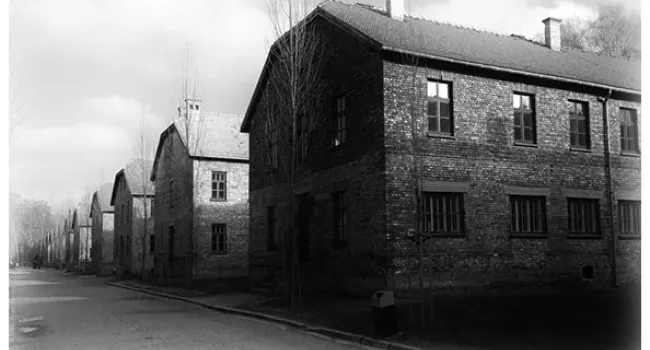"One day we heard someting that was very disturbing to all of us. We heard for the first time about Auschwitz in Poland. That's where the killing was done. That we would be sent there, and that we would share this fate, none of us knew, not even when we were in Auschwitz itself." —Rudy Herz, Myrtle Beach Concentration Camp Survivor
"The inability to comprehend evil on such a scale gives evil an advantage. It allows evil to slip away from memory and be forgotten. It must not be forgotten, or it will come back again." —Miriam Chaikin, author of A Nightmare in History
The term Holocaust comes from a Greek word that means burnt whole or consumed by fire. Between 1939 and 1945, nearly six million Jews died in the Holocaust along with five million non-Jews. Among the non-Jewish groups the Nazis singled out for murder and persecution were the Gypsies, Polish intellectuals, Serbs, resistance fighters of all nations, and German opponents of Nazism. These were not accidental deaths or casualties of war, but planned mass executions. Along with these 11 million human beings, a way of life, an entire culture rich in traditions vanished as well.
Policy of Emigration Abandoned
In the prewar years, Hitler tried to rid Germany of its Jewish population by a series of harsh, discriminatory laws intended to make Jews want to leave Germany. If this failed, he planned forced expulsion. At the time World War II began, many historians argue that the Nazis had not yet devised a plan for the murder of the Jews. Although Hitler had begun setting up concentration camps in 1934 for the persecution of political and religious dissidents, the Final Solution may not have been decided upon until after the invasion of the Soviet Union.
The war enabled the Nazis to apply their racial theories, particularly against the "subhuman" Poles, Slavs, Gypsies, and Jews. Starting in October 1939, following the invasion of Poland, Heinrich Himmler created a new department of the SS; its purpose was to deal with deportations and emigration. Once groups were categorized as "subhuman," they no longer had to be treated by the normal rules of civilized behavior. Nazi leaders felt justified in making them victims of mass brutalization.
Wansee Conference
In June 1942, Hitler decided to move from a policy of forced emigration to one of annihilation. It became official at a conference held in the Berlin suburb of Wansee. At the Wansee Conference, SS officers and other top Nazi leaders learned that a new policy was soon to be put into effect. Instead of forcing Jews to emigrate, Nazi officials would deport them to death camps. A death camp would have facilities designed specifically for mass murder.
The Nazis euphemism for this policy was evacuation to the East. At the conference, Nazi leaders received instructions for the deportation of Jews from all Nazi-occupied countries to death camps in Poland. Nazi leaders had a two-step plan. Jews were to be gathered at concentration points in cities on or near railroad lines and then taken by train to mass killing centers.
New Technology for Killing
At the beginning of the war, the SS, directed by Heinrich Himmler, had organized mobile killing squads, the Einsatzgruppen, that followed the German armies into occupied Poland and, later, into the Baltic countries. Jews were rounded up in towns and villages and driven to the forests or into the countryside. As soon as they were stripped of their clothes and any possessions, victims were executed by gunfire and buried in huge pits. Fearing this method of execution would be discovered, the Germans abandoned mass shootings and relied, instead, upon specially equipped vans that were used to gas the passengers within.
Death Camps in Poland
While the killing vans did the job, the process itself was slow. The Germans felt a new, faster method had to be found. At first the Nazis experimented with gas chambers at small concentration camps in Germany. But after the Wansee Conference, orders were given to build death camps in Poland, easily reachable by direct rail lines from any point in occupied Europe.
Eastern Europe was selected as the site for these camps for two reasons. First, the largest number of Jews lived in Eastern Europe. Second, the non-Jews living in these areas had age-old traditions of anti-Semitism and were unlikely to oppose the activities of the Nazis. In fact, many offered assistance. Starting in 1941, death camps were being built in Poland at Auschwitz, Treblinka, Sobibor, Chelmno, Belzec, and Maidanek.
Jews Forced into Camps
The Germans began to round up Jews throughout Europe. The victims were first put in ghettos and told that, when labor camps were built, they would be resettled in special work areas. In the ghettos, the Germans allowed starvation and deprivation to weaken the captives. Then, whenever the officials in charge decided, a certain number of ghetto residents were ordered to report to rail stations for resettlement "to the East."
Between 1941 and 1945, the Germans built and operated 20 major concentration camps in Germany and Eastern Europe. The concentration camps, including Dachau, Buchenwald, Mauthausen, and Ravensbruck were set up as work camps. Prisoners were worked to death as slave laborers or used in medical experiments conducted by German physicians and university scientists. Scores of other, smaller concentration camps were built too in other areas. These camps tied up men and material in their operation and were a drain on German manpower. This policy did not advance the war effort. However, it showed the strong commitment of the Nazis to the Final Solution.
At first, thinking that life could only be better away from the disease-ridden ghettos, the victims willingly accepted resettlement. In order to avoid panic in the ghettos, the Germans allowed families to travel together to the death camps. Herded into cattlewagons, the families received little water and no food as the trains made the slow trip into Poland.
Deportation to the East
The victims seldom knew what was about to happen to them. Although rumors from the death camps began to filter back into the ghettos after 1942, few Jews could believe that mass extermination was the final aim of the Germans, a nation many had considered to be the most cultured and advanced in Europe. Even when a number of death camp escapees managed to return to the ghettos and report what they had seen, their accounts were dismissed as wild stories.
Under the resettlement plan, the Nazis first emptied out the major areas of Jewish settlement in Eastern Europe. Poland was first, followed by Czechoslovakia, Bulgaria, Rumania, Yugoslavia, Hungary, and the Soviet Union. As Nazi victories in Western Europe brought even more Jews under Nazi control, victims were brought to these camps from France, Holland, Belgium, and finally, Germany itself. The policy of genocide was in full force in Europe by mid-1943.
Auschwitz Is Largest Death Camp
The largest death camp was built west of Krakow in Auschwitz. Beginning in late 1941, Russian prisoners of war and several thousand Jewish prisoners worked nonstop to build the gas chambers and crematoria, as well as hundreds of barracks to house slave laborers. German engineers and architects supervised the construction. Scores of German doctors and medical researchers were given permission to carry out medical experiments on human beings in specially equipped laboratories built on the grounds of the camp.
The camp began accepting large numbers of prisoners in 1942, and was soon operating at full capacity. While the Germans used some prisoners as slave laborers, killing was the major goal of the camp. By mid-1944, when vast numbers of Hungarian Jews began arriving at Auschwitz, 10,000 people or more were murdered daily. Even as the war brought the Soviet armies deep into Eastern Europe after 1944, trains filled with victims continued to arrive in Auschwitz.
The trains, packed with terrified prisoners, arrived in the death camps several times each day. Prisoners were unloaded from the trains by waiting guards. Once they were separated by sex, victims waited in long lines to be checked by an SS doctor who decided who would go to the gas chambers. The young, the healthy, and those with skills needed by camp officials were sent into the camp itself. In the camp, their heads were shaved and they were herded into overcrowded barracks. Old people, sick people, women with children under 14, and all pregnant women were sent to the gas chambers.
Nazis Try to Destroy Evidence of Camps
In late 1944, the Allied armies crossed into Germany and the Soviet forces liberated sections of eastern Poland. Fearful that the secret of the death camps would be discovered, the Germans began destroying them. Treblinka had already been plowed under after a Jewish revolt in August 1943, and Auschwitz was partially taken apart in 1945.
As the Allies approached several of the remaining camps, the killing continued, with nearly a half million victims murdered in 1945 alone. The SS forcibly marched the surviving prisoners from the death camps in Poland into Germany, where they remained in concentration camps until they were freed by the Allies. These final death marches killed thousands, and tens of thousands of starving victims were eventually left to die in abandoned German trains.
Hitler Commits Suicide
On April 30, 1945, shortly before he took his own life, Hitler wrote his last political testament. He blamed the war on the Jews. They were, he said, solely responsible for causing the war and their own eventual destruction.
Standards
- 5.3 Demonstrate an understanding of the economic, political, and social effects of World War II, the Holocaust, and their aftermath (i.e., 1930–1950) on the United States and South Carolina.
- 6.5.CE Explain the impact of nationalism on global conflicts and genocides in the 20th and 21st centuries.
- This indicator is intended to encourage inquiry into the significant causes of World War I and the impacts of the Treaty of Versailles, including its failure to prevent future global conflicts.
- USHC.4.CC Examine the continuity and changes on the U.S. homefront surrounding World War I and World War II.



